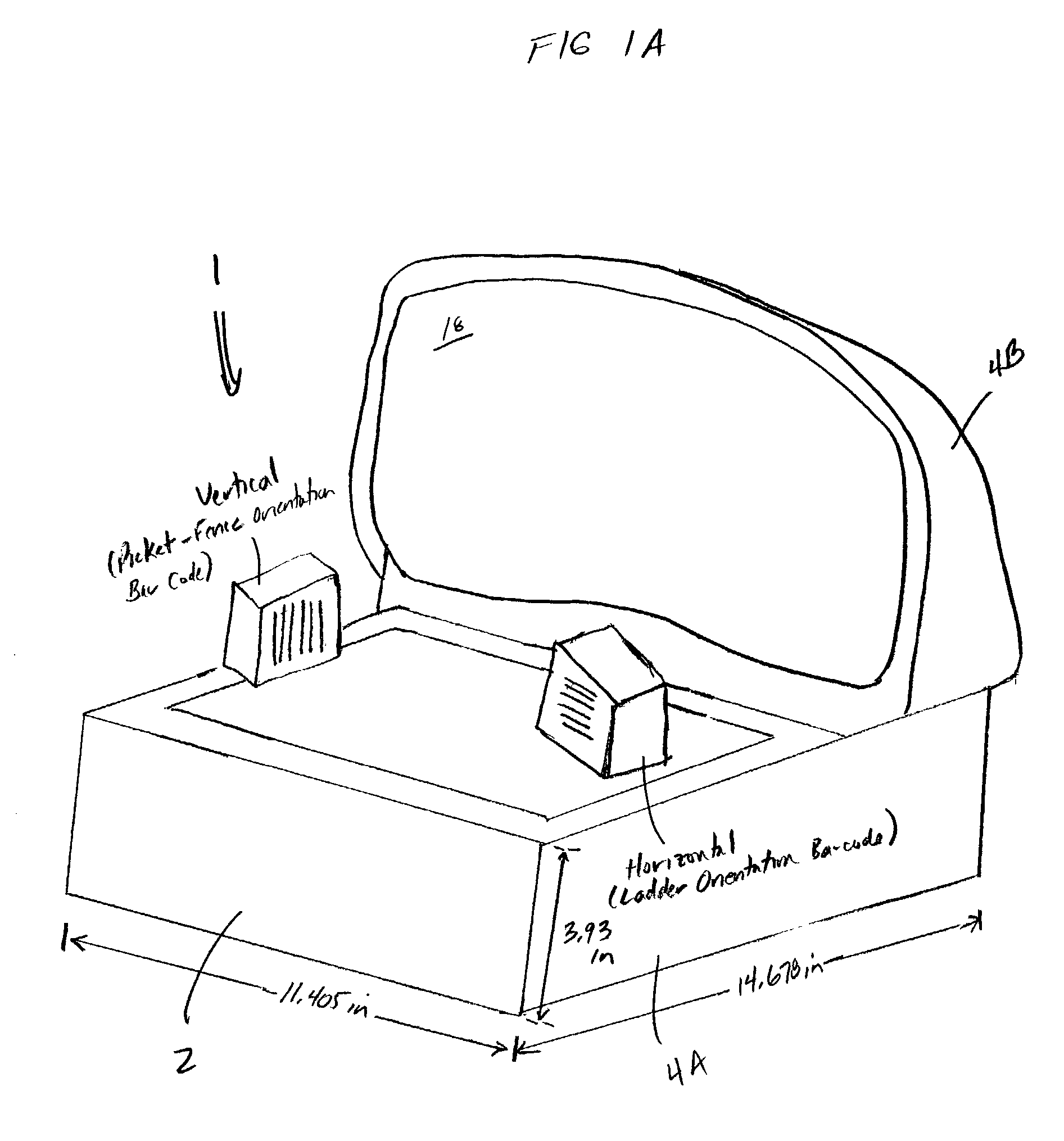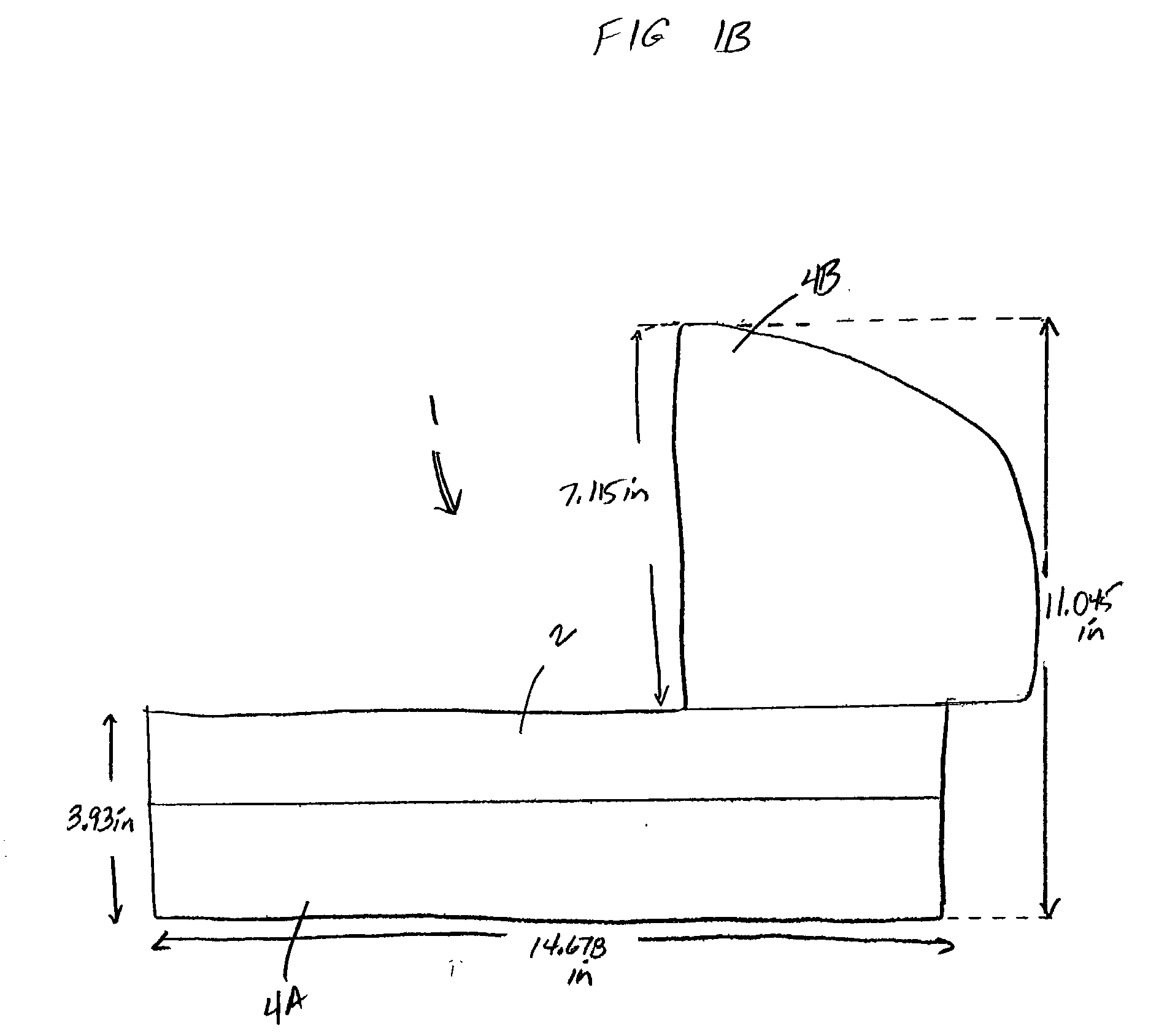Polygon-based bioptical POS scanning system employing dual independent optics platforms disposed beneath horizontal and vertical scanning windows
a scanning system and polygon technology, applied in the field of laser scanners, can solve the problems of inability to optimize the laser scanning pattern of such prior art bioptical laser scanning systems in terms of scanning coverage and performance, and the general aggressiveness of prior art bioptical scanning systems over conventional single scanning window systems, etc., to achieve the effect of improving the dynamic rang
- Summary
- Abstract
- Description
- Claims
- Application Information
AI Technical Summary
Benefits of technology
Problems solved by technology
Method used
Image
Examples
Embodiment Construction
[0129] Referring to the figures in the accompanying Drawings, the various illustrative embodiments of the bioptical laser scanner of the present invention will be described in great detail.
[0130] In the illustrative embodiments, the apparatus of the present invention is realized in the form of an automatic code symbol reading system having a high-speed bioptical laser scanning mechanism as well as a scan data processor for decode processing scan data signals produced thereby. However, for the sake of convenience of expression, the term "bioptical laser scanner" shall be used hereinafter to denote the bar code symbol reading system which employs the bioptical laser scanning mechanism of the present invention.
[0131] As shown in FIGS. 1A through 1G, the bioptical laser scanner 1 of the illustrative embodiment of the present invention has a compact housing 2 having a first housing portion 4A and a second housing portion 4B which projects from one end of the first housing portion 4A in a...
PUM
 Login to View More
Login to View More Abstract
Description
Claims
Application Information
 Login to View More
Login to View More - R&D
- Intellectual Property
- Life Sciences
- Materials
- Tech Scout
- Unparalleled Data Quality
- Higher Quality Content
- 60% Fewer Hallucinations
Browse by: Latest US Patents, China's latest patents, Technical Efficacy Thesaurus, Application Domain, Technology Topic, Popular Technical Reports.
© 2025 PatSnap. All rights reserved.Legal|Privacy policy|Modern Slavery Act Transparency Statement|Sitemap|About US| Contact US: help@patsnap.com



